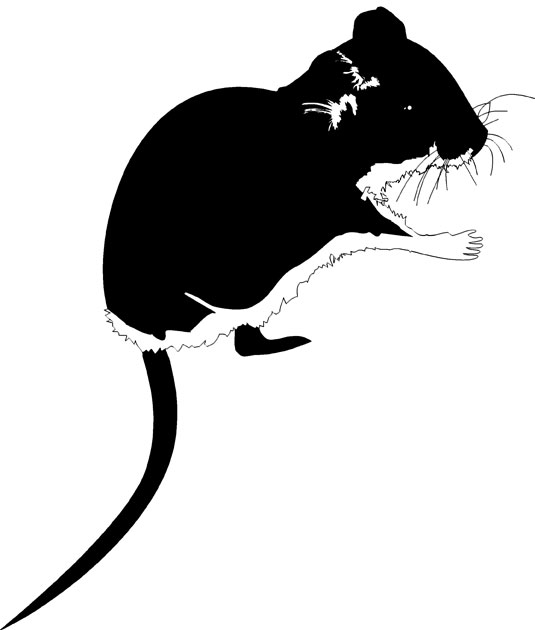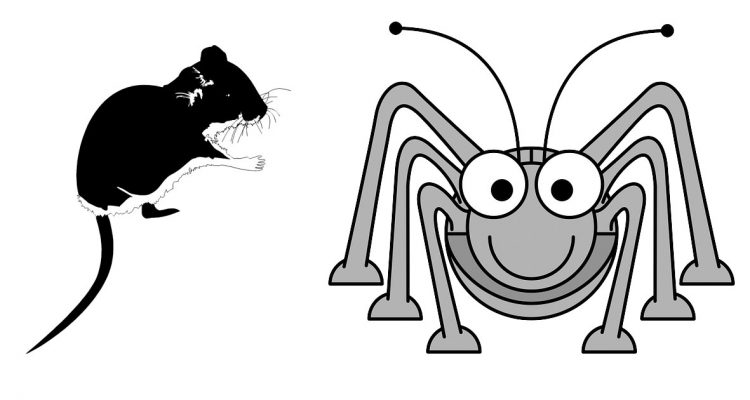Predators
Bugs
Bugs don’t seem to be a problem if the growing medium and growing conditions are at a decent standard. A little prevention can involve planting a few cloves of garlic at transplanting time, and weekly foliar feeding of liquid kelp, i.e. Nitrozyme (Growth Plus) or another brand from the time the plants are young through near maturity.
To deal with a bug problem immediately, it is recommended to apply an organic insecticidal soap combined with Nitrozyme (Growth Plus) every four to ten days while wearing a respirator. Rubbing the bottoms of the leaves gently while spraying will help to ensure that all of the areas get covered and some bugs get squished. The war psychology of bug-smearing may be argued among scientists and other interest groups.
Spider mites seem to be the rookie’s most undetected predator, next to the rat. Spider mites are bugs that suck fluids from the plants, and they can spread diseases. The plants then spend time dealing with the stress, which affects yield. Understanding what makes mites thrive is half the battle. They like a hot, dry room with weak plants. They are discouraged by high humidity, and they incubate at a highly productive rate when the temperature rises above 80°F.
Spraying the undersides of the leaves well is the key, because that is where the spider mites hang. Nevertheless, if spider mites become a problem, spraying every 4 to 7 days with an organic insecticidal soap combined with 1/2-teaspoon per quart of Nitrozyme (Growth Plus) will help.
The combination of the two is more effective than straight soap. The soap should be rinsed off with plain water a couple of days after spraying to remove the soap film from the plants’ stomata. Stomata are vital for transpiration. A respirator should be worn whenever fertilizers or insecticides are sprayed in order to keep the mist out of the lungs.
Another organic method for killing bugs is to use pyrethrins, which is an extract from the chrysanthemum plant. A health conscious grower probably would not want to get near the pyrethrins, organic or not. Yet another organic method to keep bugs under control are to plant garlic in soil or soilless mix. Neem oil is a good product to use to fight mites.
Other methods to kill all bugs are to use malathion, diazinon, etc. These materials have rather short half lives, but again, they stink like serious toxicity and should not have a place in the garden.
Anybody needing to use a bug spray should polish up on his horticulture skills and grow healthy plants rather than rely on a toxic Band-Aid solution.
If spider mites cannot be dealt with at this level, regular misting and foliar feeding should be enough of a preventative tactic to ensure the mite population does not get out of hand, unless plants are weak from poor cultivating methods.
Predator mites are an expensive method for dealing with the problem. If predator mites are used, it is still a good idea to lower the spider mite population with insecticides before introducing the predator mites. However, it is recommended to wait a few days for the chemical ingredients of the insecticide to wear off before the introduction of the predator mites so that they won’t get zapped.
When mites are at a tolerable level, all else must be going okay. The more mite-free the rooms the better, but a grower should not be overstressed because of a few mites.
The mite population should be as minimal as possible on the mother plant(s). When a mother plant gets a disease, new clones may be hard to root. They may still be productive, but the disease will be a hindrance and can interrupt the normal schedule.
It is good to mist plants daily or every second day. A good time to mist is right after the lights come on. Misting also helps keep other bugs, such as thrips, under control.

Rats and Mice
Mice tend to like young seedlings, even those that have just germinated. However, once seedlings are 2 to 3 weeks old, mice tend to leave them alone. The seedling zone should always be well-sealed so that it is 100% mouse-proof, because they have been known to devour complete starter rooms. Utrasound is a unit that sends out a frequency that deters mice and rats, yet is not heard by pets and family.
Rats, on the other hand, can be life-threatening to plants. Rats will eat a circle around the outer stalk, at the base of the plant. This will look similar to a tree that is being cut down by a lumberjack.
This removal of the plant tissue will stop the flow of vital fluids from traveling up and down the plants, and plants will wilt and die soon afterward.
However, some plants can be saved, if they still look normal and healthy. To remedy the situation, it is recommended that you cut out a piece of outer bark from a plant of the same species; then place the patch over the bark that was eaten so that it connects to the upper and lower parts of the stalk where the rat had stopped eating.
Now just a little Vaseline and tape will secure this patchwork. This patch will act like a suspension bridge so that it is possible to pass necessary components from the lower and upper sides of the stalk. The new material will eventually be welded in place and the plant will be fine.
Mothballs around a plot may act as a deterrent to rats.
Rats do like eating some organic fertilizers such as canola meal and Flower Power.
Mold / Mildew
It is always best to prevent mold in the bud and stems by having an acclimatized strain that is known to handle the elements, and by regular foliar feeding with Nitrozyme (Growth Plus) or a quality liquid kelp. However, for whatever reason a mold problem may occur. For mold problems, it is recommended that you spray the plants with an organic fungicide with Nitrozyme (Growth Plus).
There are other fungicides that are commonly available that contain the ingredient copper sulphate, such as organic fungicides and Wilson’s Bordeaux.
Grow rooms should be disinfected before they are used in order to remove any mildew / mold that creeps in during high humidity and makes a mess of the walls with black spots that leave a greasy film and stain. Keeping humidity around 60% is good prevention.
Disease
A strong strain and a good grow medium are needed at the preventative level. When a disease hits clones, starting again from seed may be the answer. Most diseases can be dealt with, unless the plant receives poor care.
Fusarium
When plants wilt not for lack of water, fusarium is a major possibility. Fusarium targets a plant with weak roots and a water temperature over 70°F. Roots often become unhealthy (brownish) in stagnant, warm water. Keeping roots healthy (whitish) and water temperature below 70°F is the best preventative measure for dealing with fusarium.
If fusarium hits a plant and it becomes wilted and sickly looking, the plant should be pulled immediately so that it will not hinder the other plants. If other plants share the same water (i.e. hydroponic gardening), hydrogen peroxide should be added to the water at a rate of 2 to 5ml / gallon to help sterilize the water.



